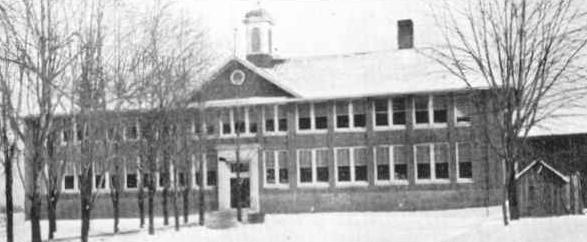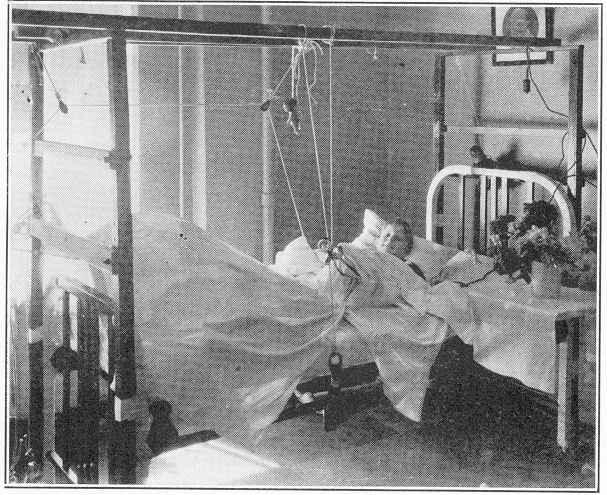Living in Michigan, we visit Greenfield Village, the museums in Detroit, historic homes and villages across the state, and etc. When I'm off for summer vacation, I like to make at least one or two little trips to scratch that history-loving itch. One spot I've always been meaning to see, but haven't taken the time is Bath, Michigan.
Bath is a quiet, unassuming town in the heart of Michigan. You're likely to see a tractor somewhere on the road, and the population is somewhere around 2,000 (bigger than my hometown, but still!). Most people have never heard of Bath, and never would have, save for one very big, very horrific act of violence in 1927, one that still holds records today.
In the summer of 1926, a former school board treasurer Andrew Kehoe decided that the new Bath Consolidated School building was the reason for the foreclosure of his farm because the town raised taxes. His wife was sick, and he wasn't well liked around town; neighbors mentioned that he was cruel to his own animals, even beating a horse to death. Needless to say, his disgruntled attitude, financial downfall, and penchant for violence boiled into a recipe for disaster.
For months, he purchased explosives that he placed around the school when he was hired to do electrical work. No one thought anything about him lugging bags of equipment and crawling around in the walls of the nearly finished building. Incidentally, the amount he spent on said explosives might have pulled his farm out of foreclosure. It didn't matter; he decided his course of action and would follow through. He waited patiently.



In the summer of 1926, a former school board treasurer Andrew Kehoe decided that the new Bath Consolidated School building was the reason for the foreclosure of his farm because the town raised taxes. His wife was sick, and he wasn't well liked around town; neighbors mentioned that he was cruel to his own animals, even beating a horse to death. Needless to say, his disgruntled attitude, financial downfall, and penchant for violence boiled into a recipe for disaster.
For months, he purchased explosives that he placed around the school when he was hired to do electrical work. No one thought anything about him lugging bags of equipment and crawling around in the walls of the nearly finished building. Incidentally, the amount he spent on said explosives might have pulled his farm out of foreclosure. It didn't matter; he decided his course of action and would follow through. He waited patiently.

On May 18th, 1927 at 8:45, neighbors noticed a fire over at the Kehoe farm. They found the house fully engulfed, no sign of Kehoe and his wife. The barn burned too, with the horses' legs tied together so they couldn't escape. Volunteers were puzzled, hoping to find someone alive in the flames. They crawled into the house through a broken window and discovered explosives.

Kehoe drove by volunteers helping to put out the fire, commenting that they had better head into town. Specifically the school. They rushed back to find a grisly scene.


At 8:45 explosions ripped through the building, remotely detonated by an alarm clock. The entire North Wing of the school collapsed, classrooms crushed in seconds. Parents in town rushed to the scene, pulling children from the smoldering rubble. Most of the victims were in elementary school, not much older than ten years old. Thirty eight children were killed in total, along with five adults. Fifty-eight others were injured. Volunteers moved and covered the bodies on the lawn of the school temporarily as rescue workers continued to sift through the debris. Parents lifted blankets to check the faces of deceased children to see if theirs perished. Injuries were so severe that some were unrecognizable.
"There was a pile of children of about five or six under the roof and some of them had arms sticking out, some had legs, and some just their heads sticking out. They were unrecognizable because they were covered with dust, plaster, and blood. There were not enough of us to move the roof."
-Monty Ellsworth, Kehoe's neighbor
Kehoe himself arrived to survey the damage. He motioned to the superintendent to come speak to him at his truck. When he leaned in to the vehicle, Kehoe detonated another bomb, this one filled with metal parts that acted as deadly shrapnel. Superintendent Huyck, a nearby farmer Nelson McFarren, the postmaster Glenn Smith, and a second grader who had escaped the blast all perished.
"I saw one mother, Mrs. Eugene Hart, sitting on the bank a short distance from the school with a little dead girl on each side of her and holding a little boy, Percy, who died a short time after they got him to the hospital. This was about the time Kehoe blew his car up in the street, severely wounding Perry, the oldest child of Mr. and Mrs. Hart." -Ellsworth
Somehow, something good did happen that day. Kehoe had wired the entire building to go down, not just the North Wing. 500 pounds of explosives were untouched throughout the rest of the building. The first bomb possibly knocked the wiring, rendering them useless. Had they gone off in other classrooms, the death toll would have been much, much higher.
Later rescuers discovered Kehoe's wife in the back of wagon on their property, her charred remains unrecognizable to anyone passing by. They found a sign on the property, one that Kehoe painted himself: "Criminals are made, not born." In the aftermath of the disaster, thousands of people visited the town to see the wreckage of the building. A fund was set up to help aid the medical bills of the children and families. Three days after the attack, Lindbergh made his famous flight, and the bombing slowly faded into memory. To this day, it remains the deadliest school attack in the United States.


This is not a well-known story, and I confess to knowing very little about it until I taught a forensics class (and English class version) about Michigan crimes. It seems that after the disaster, many families kept quiet and did not discuss what happened. It was a painful memory that no one wanted to remember. There's a memorial now where the school once stood, and a museum in the middle school across the street.
Killed in the disaster
|
Before the school bombing
|
Killed in the school bombing
|
Killed by the truck bombing
|
Died later of injuries
|
As a teacher I'm appalled by the idea of such a thing. I sit in my classroom with a room full of young people, and I can't imagine such a terrible act, not in my worst nightmares. The cold, calculating way the attack was carried out chills me to the core. Teachers at the Bath School went to their classrooms early, just as I do, on May 18th, 1927. They put out their lesson plans, made sure there were enough books and pencils. They shooed children into their rooms and began the day. I do all of those things; as summer draws to a close, I'm prepping my posters and activities. Two teachers didn't go home that day. Some crimes feel very, very personal.
This summer we were passing though on our way to the west side of the state. We stopped for gas at the Bath exit, and I asked my fiance if we could drive just a bit further down the road. Summer in Michigan is breathtakingly beautiful, especially in these small towns. You'd never guess what happened here unless you read the historical marker.
It was so peaceful, and I thought about all the children that spent their last day getting ready to learn on these grounds I like to think they're on the lawn still playing, maybe keeping a watchful eye over the middle school down the street, just to make sure.
As the summer winds down, remember the kids and staff at schools. We're going back to our books and our lessons, and hopefully a safe classroom environment. Hug your kids a little closer, and do what you can to make this a good year for them. I know I'll be there in my room, the first day of school, doing that too.
~Kristen
Sources:










No comments:
Post a Comment